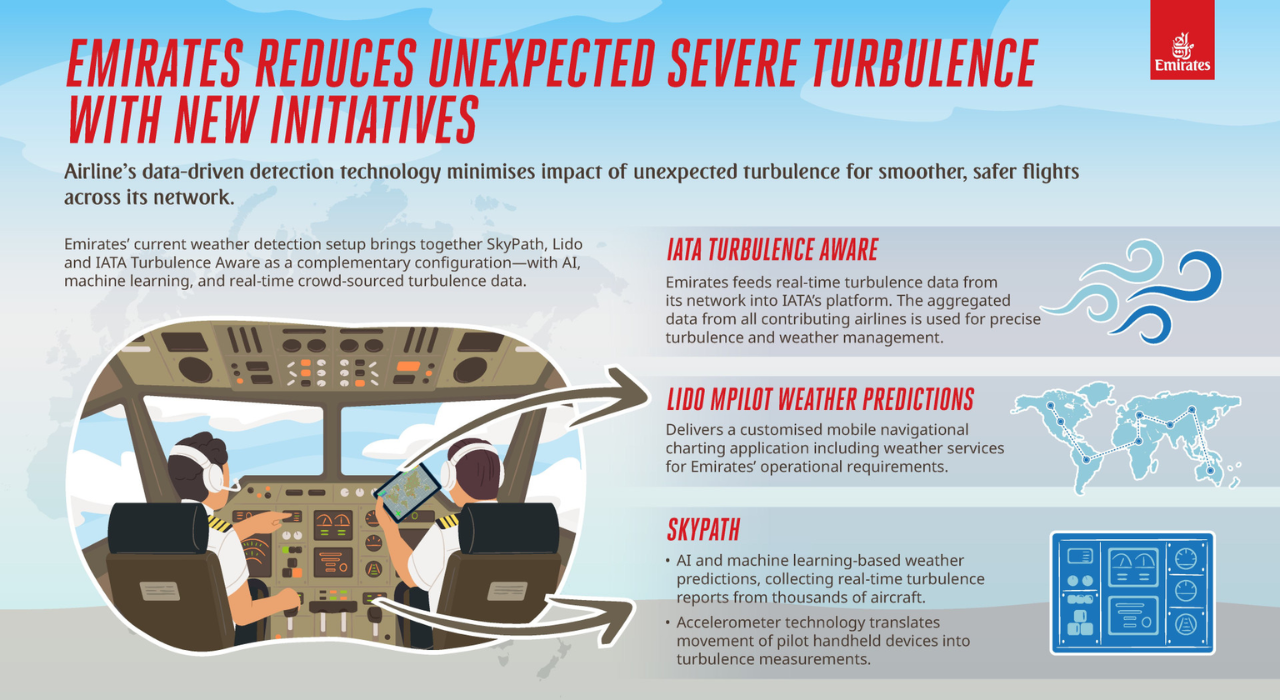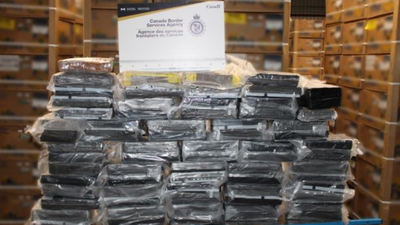No more bumpy flights: How Emirates is using artificial intelligence to make turbulence a thing of the past | World News

Ever since the rise of modern jetliners, turbulence has been the great leveller of air travel, a sudden reminder that no matter how advanced aviation gets, the skies still have a mind of their own. Those pockets of unstable air, born of shifting wind patterns, temperature gradients, or jet streams, can jolt even the smoothest flight into a brief chaos of clinking cups and tensed grips.As turbulence events grow more frequent and severe worldwide, Emirates is responding with a comprehensive, data-driven strategy to make the experience safer and smoother. The airline’s latest initiative marks a shift toward a multi-layered, intelligence-led approach, harnessing real-time global data, predictive analytics, and artificial intelligence (AI), efforts that have already led to a measurable decline in unexpected severe turbulence across its global network over the past year.
Integrated technology for predictive accuracy
Emirates’ current turbulence detection and forecasting framework integrates SkyPath, Lido mPilot from Lufthansa Systems, and IATA’s Turbulence Aware programme. Together, these systems form a complementary ecosystem that delivers real-time turbulence information, high-accuracy weather reporting, and predictive analytics powered by AI and machine learning.

The airline’s multi-layered system uses real-time data and AI to help pilots plan smoother routes, cutting down mid-air bumps/ image: Emirates
- SkyPath:
Emirates partnered with SkyPath last year to enhance turbulence detection using AI-driven machine learning and real-time crowd-sourced data from thousands of aircraft worldwide. SkyPath analyses Eddy Dissipation Rate (EDR) data — the industry’s universal measure of turbulence, along with Automatic Dependent Surveillance–Broadcast (ADSB) transponder data and its patented iPad accelerometer readings, which convert device motion into turbulence measurements.
This system helps identify ‘clear-air turbulence’ — invisible to traditional radar, ensuring global coverage and industry-leading prediction accuracy. - Lido mPilot Weather Predictions:
Through a long-standing collaboration with Lufthansa Systems, Emirates uses the Lido mPilot application — a mobile charting and weather solution offering live convection data, icing forecasts, and turbulence predictions. Data is sourced from partners such as the German Weather Service, with Emirates continuously working with the Lido team to expand coverage and improve model precision for pilot situational awareness. - IATA Turbulence Aware:
Since joining theIATA Turbulence Aware Programme last year, Emirates has both contributed and received real-time turbulence reports from airlines across the Middle East, Africa, Asia, and Australia. This global data exchange feeds into IATA’s turbulence platform, providing a comprehensive, live view of atmospheric conditions.
Together, these technologies integrate into Emirates’ electronic flight bag charting application, allowing pilots to visualise live turbulence zones, anticipate weather variations, and plan safer, more comfortable flight paths.
Commitment to innovation and safety
Captain Hassan Alhammadi, Divisional Senior Vice President, Flight Operations at Emirates, said:“We recognise that turbulence remains an ongoing challenge that cannot be completely eliminated, but we’re committed to doing everything possible to minimise unexpected severe turbulence encounters through working with partners who share our vision of using advanced technologies and adopting AI to enhance operations. While we are still in the early stages, we are already seeing validation of the potential benefits these systems can deliver.While we cannot promise turbulence-free flights, these initiatives have contributed to a significant reduction in unexpected severe turbulence incidents over the past year, helping make journeys safer and more comfortable for our customers. Our multi-layer approach with weather prediction and technology partners and active participation in the IATA Turbulence Aware programme also enables us to contribute valuable data and insights to the broader aviation industry as we collectively work to address this growing meteorological challenge.”
A data-driven future for flight comfort
By combining these advanced systems, Emirates not only enhances its turbulence prediction capabilities but also supports fuel efficiency, operational resilience, and passenger comfort. The airline continues to collaborate with global aviation and technology partners to refine data accuracy and predictive models — reinforcing its position as an industry leader in innovation, safety, and customer wellbeing.
Discover more from stock updates now
Subscribe to get the latest posts sent to your email.








